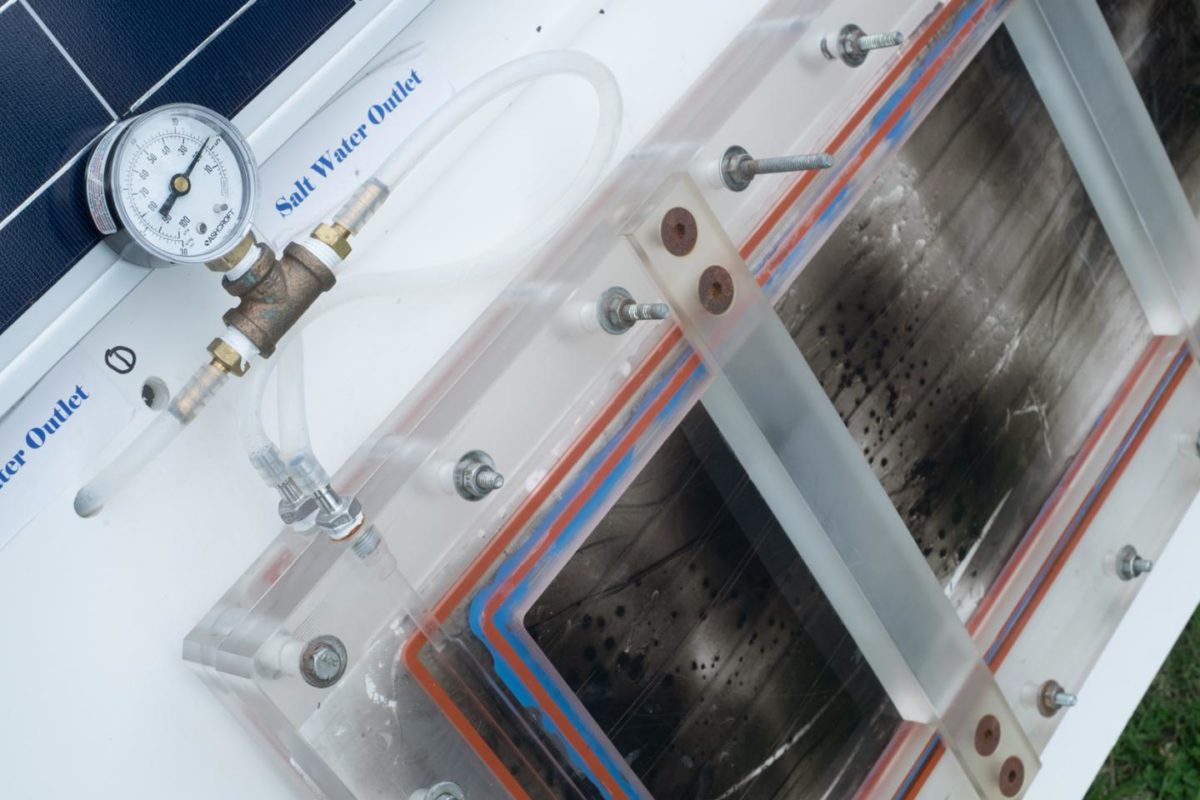Desalination plants are a vital source of clean water in many parts of the world, with several thousand plants already in operation in 150 countries. Desalination processes, however, are typically highly energy intensive, something which this first major innovation from the Center for Nanotechnology Enabled Water Treatment (NEWT), based at Rice University, aims to improve upon.
The team at NEWT built on an emerging technology known as membrane distillation, whereby hot salt water is flowed across one side of a porous membrane and cold freshwater across the other, and water vapor is drawn through to the cold side, to create its new ‘Nanophotonics-enabled solar membrane distillation’ (NESMD) technology.
“Unlike traditional membrane distillation, NESMD benefits from increasing efficiency with scale,” said Naomi Halas, leader of NEWT’s photonics research. “It requires minimal pumping energy for optimal distillate conversion, and there are a number of ways we can further optimize the technology to make it more productive and efficient.”
The technology developed by NEWT integrates engineered nanoparticles, which the team says can harvest as much as 80% of sunlight to generate steam, into the porous membrane, essentially turning it into one sided heating element that heats the water to drive distillation through the membrane.
Popular content
In a study described in the Proceedings of the National Academy of Sciences journal, researchers demonstrated proof of concept for the technology based on tests using an NESMD chamber about the size of three postage stamps. The membrane contained a top layer of carbon black nanoparticles, which heat the entire surface when exposed to sunlight.
Qilin Li, Rice University Scientist and water treatment expert, said that the team had already made a larger system of around 70 x 25 centimeters, and that NEWT is hoping to scale the technology up to a modular design where customers could calculate how many panels they need based on their daily water demand. “Direct solar desalination could be a game changer for some of the estimated 1 billion people who lack access to clean drinking water,” says Li. “This technology is capable of providing sufficient clean water for family use in a compact footprint, and it can be scaled up to provide water for larger communities.”
Other organizations have also noted the potential of solar for water desalination, the United Arab Emirates Masdar Institute launched a project to test different configurations for solar and desalination technology in Ghantoot, Abu Dhabi.
This content is protected by copyright and may not be reused. If you want to cooperate with us and would like to reuse some of our content, please contact: editors@pv-magazine.com.



By submitting this form you agree to pv magazine using your data for the purposes of publishing your comment.
Your personal data will only be disclosed or otherwise transmitted to third parties for the purposes of spam filtering or if this is necessary for technical maintenance of the website. Any other transfer to third parties will not take place unless this is justified on the basis of applicable data protection regulations or if pv magazine is legally obliged to do so.
You may revoke this consent at any time with effect for the future, in which case your personal data will be deleted immediately. Otherwise, your data will be deleted if pv magazine has processed your request or the purpose of data storage is fulfilled.
Further information on data privacy can be found in our Data Protection Policy.